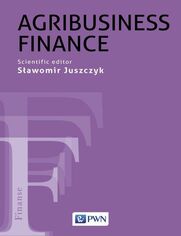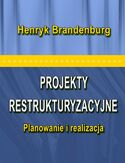Agribusiness Finance - Onepress

Tłumaczenie: Aleksander Wojciechowski, Gabor Chodkowski-Gyurics
ISBN: 9788301228583
stron: 580, Format: ebook
Data wydania: 2023-01-24
Ksi─Ögarnia: Onepress
Cena ksi─ů┼╝ki: 87,20 z┼é (poprzednio: 109,00 z┼é)
Oszczędzasz: 20% (-21,80 zł)
The production and processing of food, creation of the means of production for agriculture and food industry, as well as related services in other words, the entirety of agribusiness have their own, distinct specificity. Unfortunately, from the viewpoint of a producer or a financier, a disadvantageous one. Agribusiness tends to be a difficult endeavor, much more so than other businesses due to inherent, natural (in the most literal meaning of this word) factors, leading to high expenditures (including costs), long production cycles, long payback periods and various risks not present in any other business activity. Therefore, the topic of agribusiness finance is very complex and much wider than, say, the finances of a business producing industrial goods, such as consumer electronics, home appliances or footwear. Agribusiness finance issues are covered somewhat extensively in subject literature, but at the same time in a rather fragmented manner. Up to this point, there has been no major work applying financial sciences to the sphere of agribusiness. This textbook is therefore a modest and pioneering attempt to fill this theoretical, educational and practical void. Comprehensive and up-to-day textbook covering all aspects of agribusiness finances. Authors discuss EU Common Agricultural Policy, social and property insurance in agriculture, financial realities of agricultural enterprises and rural local governing bodies, cooperative and commercial banking activity in agriculture and agribusiness, as well as agribusiness enterprises as they relate to financial markets. This textbook provides crucial knowledge to students of: Finance and accounting (economics of food industry, insurance) Economics (economics of food industry, economic system and organization of agricultural enterprises, agricultural policy). Management (economics of food industry, economic system and organization of agricultural enterprises). This book is relevant to both researchers in economy and finances, and practitioners active in agribusiness or related industries. What students of economics, as well as finances and accounting, and many others should find interesting are the matters covered and results of their analysis, and also vast biographic notes provided as references to in-depth inquiries into agribusiness. From praise by professor Alfred Janc I highly value this book for its methodology and merit. I also believe it will be useful for both students and researchers and practitioners of business who wish to learn more about agribusiness finances. From praise by professor Janusz
Osoby które kupowały "Agribusiness Finance", wybierały także:
- Udzia 0,00 zł
- Rachunkowo 0,00 zł
- Changing Paradigm for Inventory Management in a Supply Chain Context 0,00 zł
- Rachunkowo 0,00 zł
- Rezerwy celowe w systemie rachunkowo 0,00 zł





